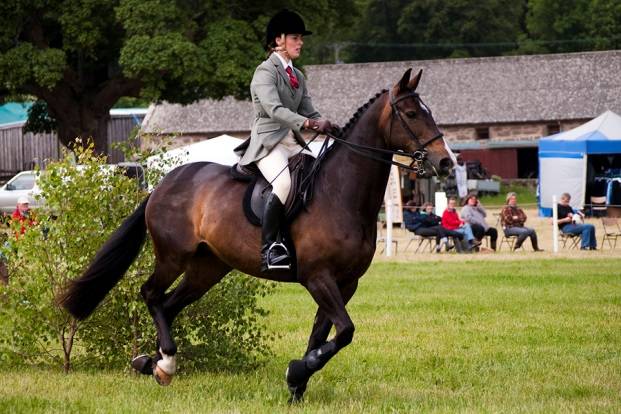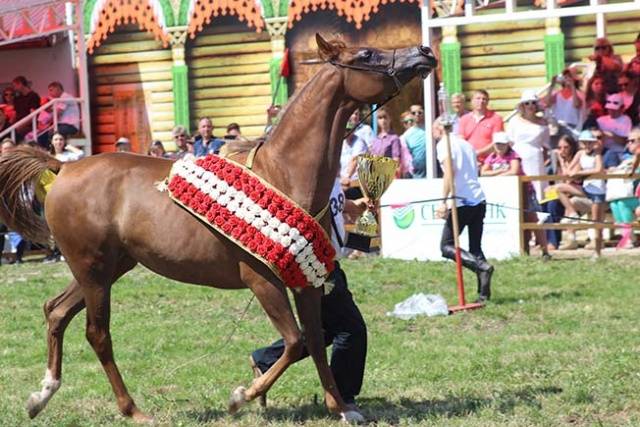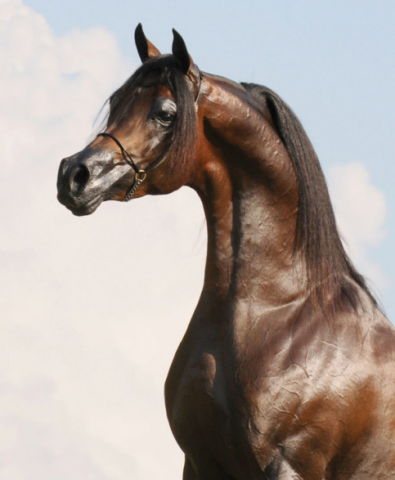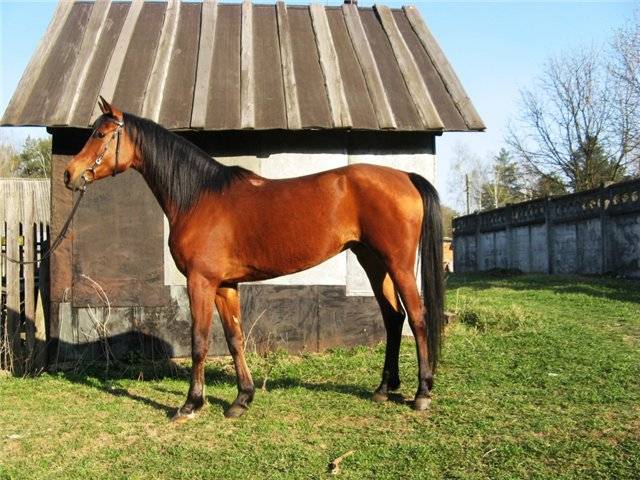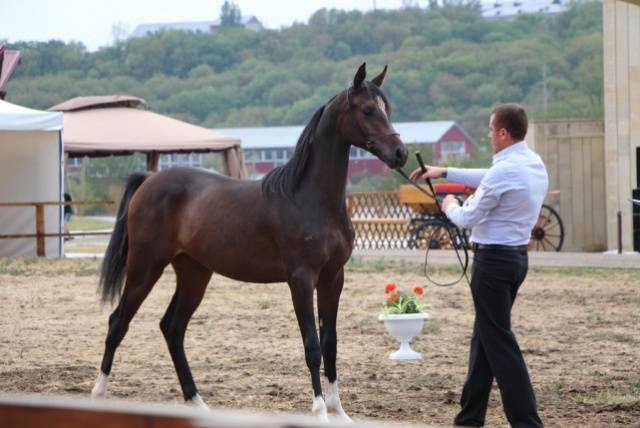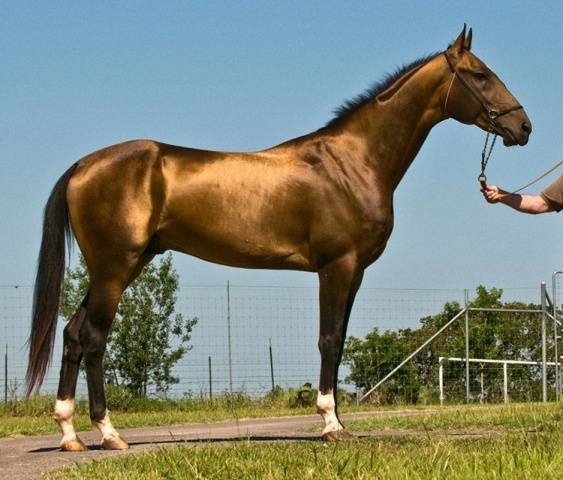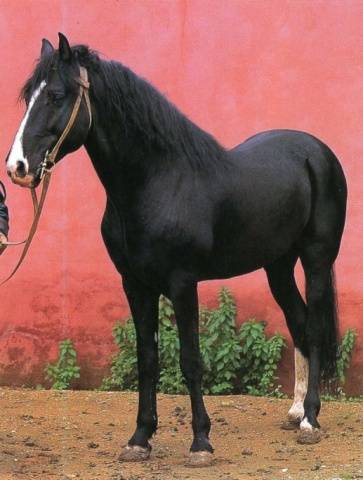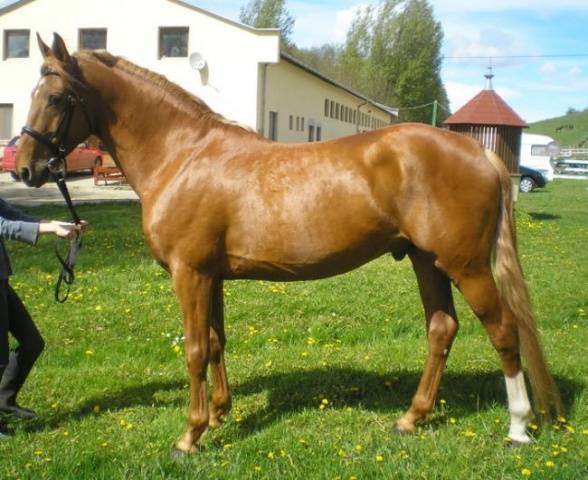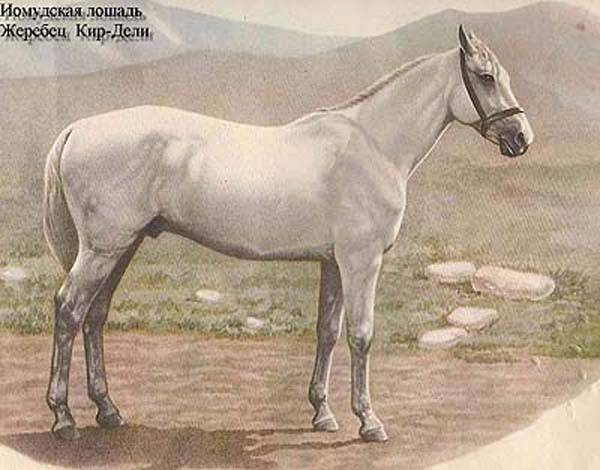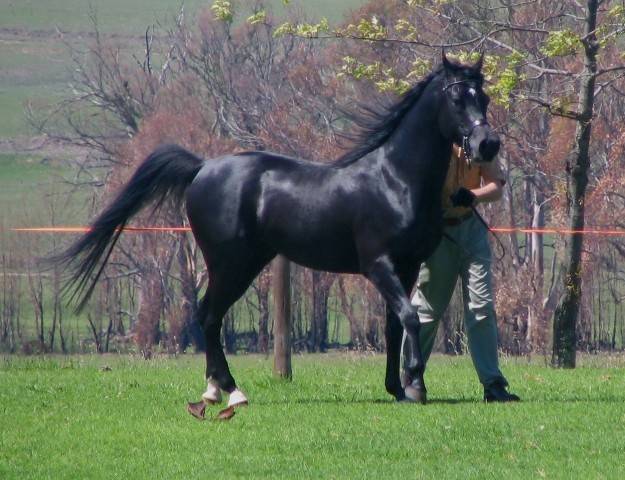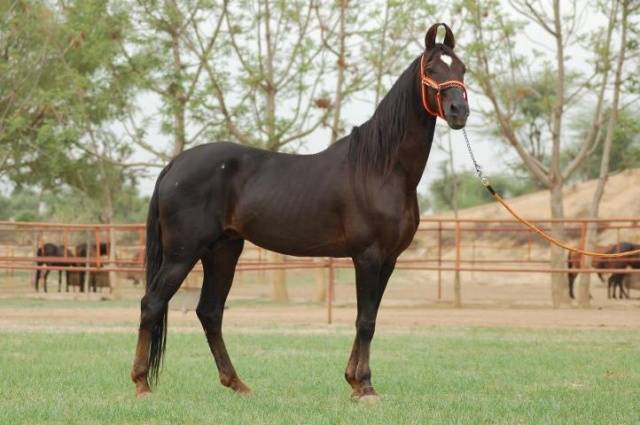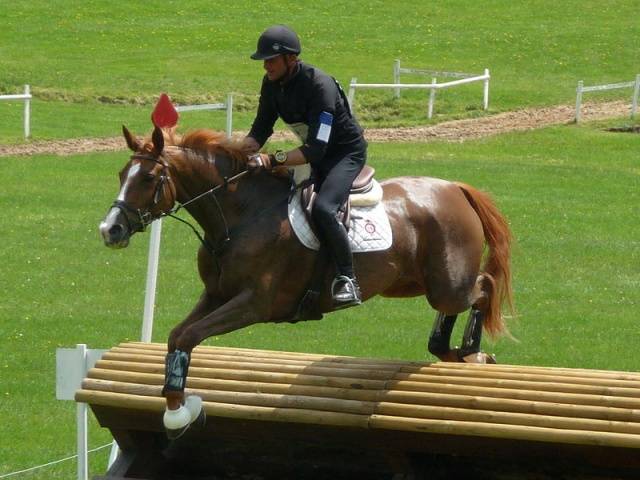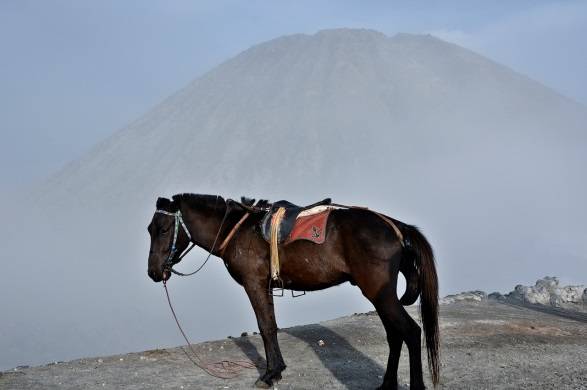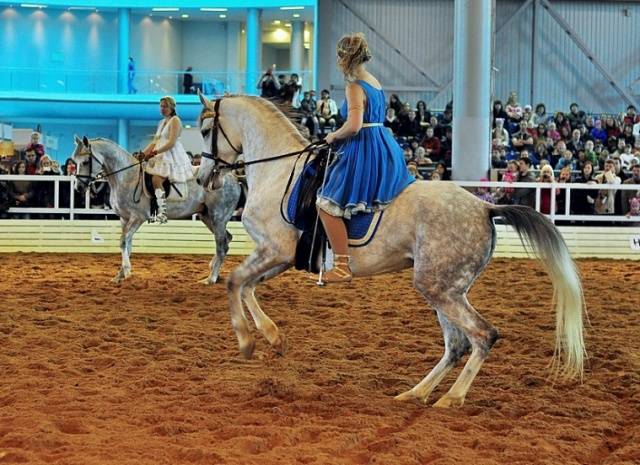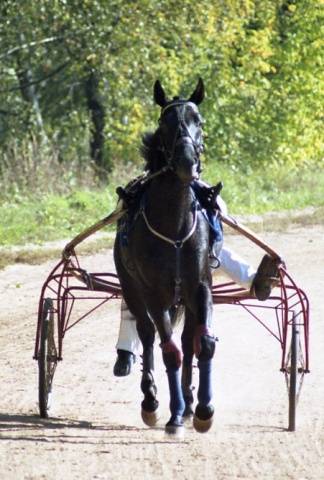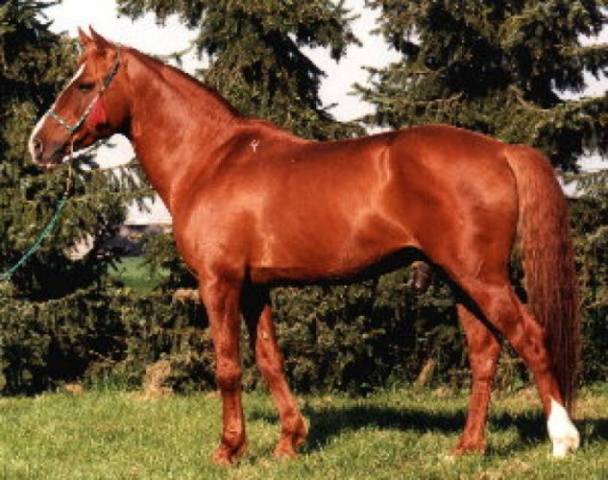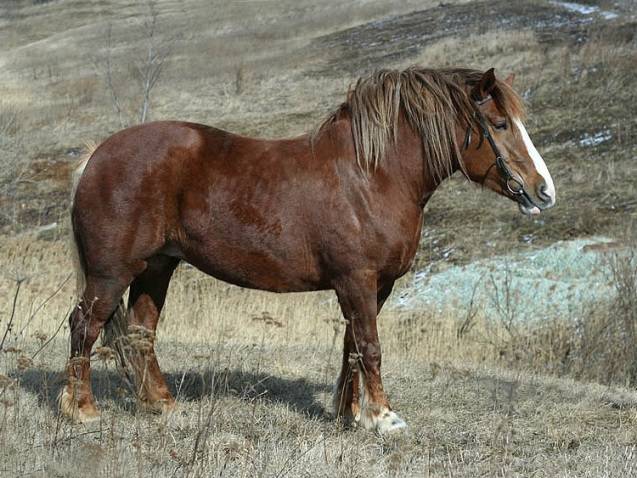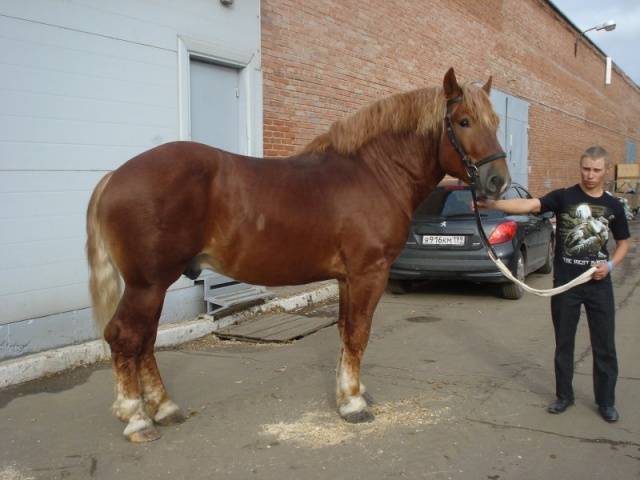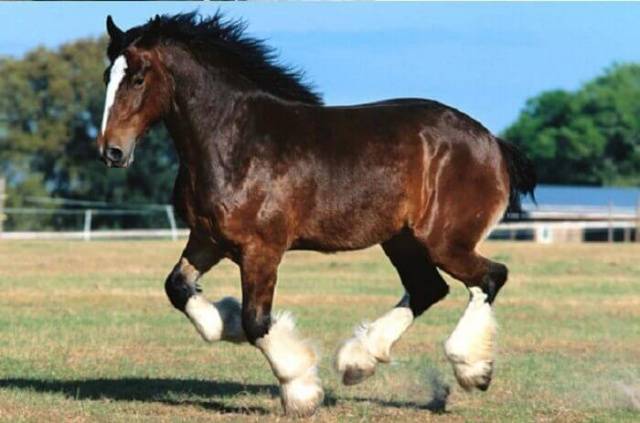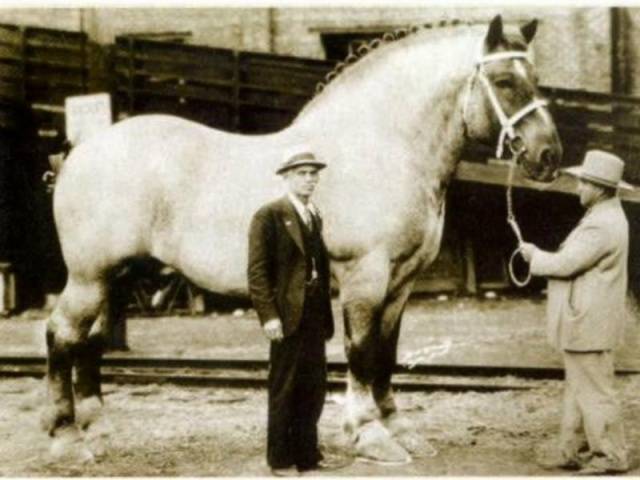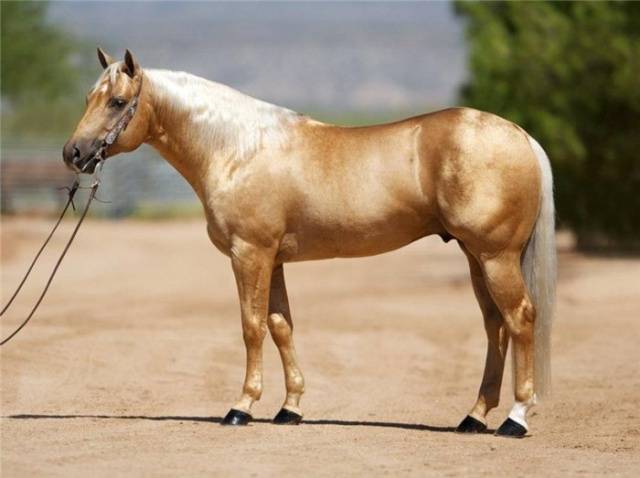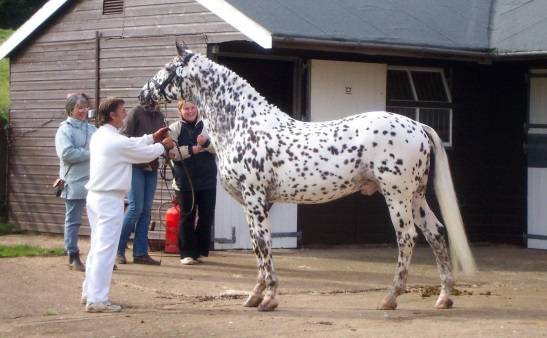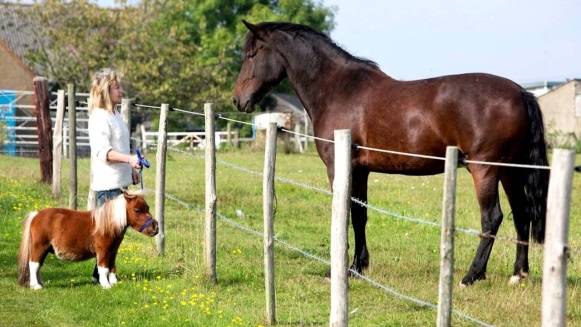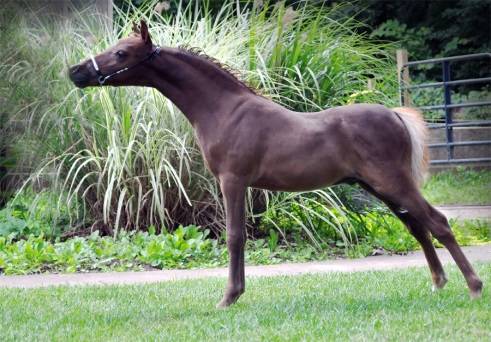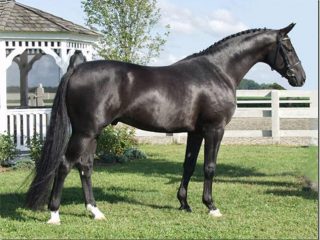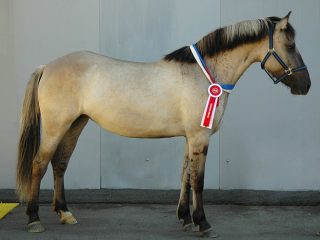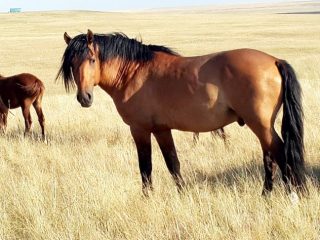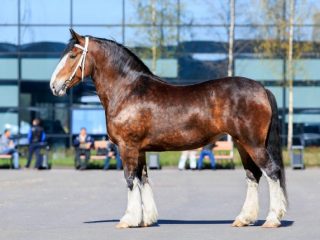During the coexistence of man and horse, horse breeds arose, developed and died out. Depending on the climatic conditions and the needs of mankind, the opinion of people about which of the breeds is the best also changed. In the VI century BC. Thessalian horses were considered the best, then this title passed to the Parthian ones. In the Middle Ages, Iberian horses were famous. From the 18th century this place was taken by the Arabian breed.
Although some modern horse breeds claim to be of very ancient origin, it is unlikely that the horses in this area have survived unchanged. With ancient horses, modern breeds are related only to the territory of breeding.
Classification
There are more than 200 horse breeds in the world, ranging from very small ones to real giants. But only a few of them were specially bred for specific purposes. Most are versatile aboriginal breeds that can be harnessed or used for riding.
All horse breeds with photos and descriptions, including the aboriginal horses of the Japanese Islands, are unlikely to be considered, but the most common and demanded ones can be indicated. In the USSR, it was customary to divide breeds into three types:
- riding;
- riding and harnessing;
- harness.
At the same time, harness breeds could be further divided into light harness and heavy harness breeds.
The world has adopted a different classification:
- purebred;
- half-blooded;
- heavy-duty.
The half-bred breeds belong to the genus of the local livestock and initially often had agricultural purposes. These horses are a vivid example of how a harness breed according to the Soviet classification suddenly becomes a horse. And after several decades, people can no longer imagine that these horses could be harnessed to an ordinary cart.
In addition to classification by purpose, there is also a classification by type:
- hunter;
- cob;
- hake;
- polo pony.
This classification is done more in appearance, although the horse must meet certain requirements physically. But the breed does not matter for this classification.
But to begin to understand what horse breeds are, it is better with thoroughbreds. There are fewer of them. It makes no sense to place the horse breeds alphabetically, since the name of a heavy draft breed and a refined horse can begin with the same letter. The alphabet only makes sense within types.
Purebred
They have about the same "pure" blood as the "purebred Aryans" had in the 30s of the last century. The literal translation of the name Thoroughbred is “carefully bred”. This name is in the original horse breed, which in Russia is called Thoroughbred horse. Such a literal translation is closer to the concept of what should be considered a purebred breed.
Another point that determines "purebred" is the Tribal Book, closed from extraneous infusions.
But so far in Russia, only three breeds are customarily considered purebred: Arabian, Akhal-Teke and Thoroughbred horse.
Arabic
It originated around the 7th century AD on the Arabian Peninsula.Together with the Arab conquerors, it spread almost throughout the Old World, laying the foundation for all breeds that are now considered half-blooded.
It is considered an improver for all bred breeds. The Arabian horse has several types within the breed, so you can find a suitable manufacturer for almost any half-breed.
But if Maanegi is difficult to find today, then other types of Arabian horse breeds with photographs and names are always happy to provide the Tersk stud farm, which breeds the Russian population of three types of Arabs.
Stavropol siglavi.
With a rather gentle constitution, these horses are not as refined as foreign exhibition siglavi, which are already called cartoons in plain text.
Although they cannot be called the most expensive horse breed, since this is only a type, it is the exhibition siglavi that are the most expensive horses in the mass. Even ordinary horses of this type cost more than $ 1 million.
Coheilan.
The most "practical" and largest type of Arabian horse. Compared to the Seglavi, these are rough horses with good health.
Koheilan Siglavi.
It combines the sophistication of siglavi with the strength and practicality of a coheilan.
Akhal-Teke
It took shape in Central Asia, but the exact time of removal is unknown. Like Arabian horses, it was used by nomadic tribes in raids and wars. It differs from the Arabian in very long lines of the body and neck. Many amateurs consider Akhal-Teke horses to be the most beautiful breed of horses. And not lovers of "herring". There are no comrades for taste and color, but everyone recognizes one thing: Akhal-Teke horses have a lot of interesting colors.
Thoroughbred horse
Bred over 200 years ago in the UK. For breeding, mares of the local island livestock and oriental stallions were used. As a result of strict selection according to the results of racing tests, a large horse with long lines was formed. Until the end of the twentieth century, the Thoroughbred Horse was considered the best horse breed for show jumping, triathlon and steeplechase. Today, in show jumping and triathlon, they choose not a breed, but a horse, and the Thoroughbred Horse has given way to half-blooded European breeds.
Others
English taxonomy provides for other purebred breeds:
- Barbary;
- Hydran Arabian;
- Yomud;
- Spanish Anglo-Arab;
- Kativari;
- Marvari;
- French Anglo-Arab;
- Shagiya Arabian;
- Javanese pony.
The Spaniards add the Andalusian breed to the list. It is better to give these horse breeds, exotic for Russians, with photos and names.
Barbary
Formed in the north of the African continent. The origin is unknown. It has not even been found out to whom the palm in appearance belongs: Arab or Berber. Some believe that the Arabian horses were formed with the close participation of the Berberian. Others are the other way around. It is most likely that these rocks mixed to form each other.
But the Berberian is distinguished by the hump-nosed profile characteristic of the Iberian breeds. The same profile is often found in the Hadban-type Arabian horse, which is very similar in characteristics to the Barbary horses.
Hydran Arabian
Hungarian Anglo-Arab, formed in the 19th century. The origin of the breed was laid by the Arabian stallion Siglavi Arabian, exported from Arabia. From the Spanish mare and Siglavi Arabian, the foal Hydran II was obtained, which became the ancestor of the Hydran Arabian breed. When breeding the breed, mares of the local livestock and horses of the Spanish breed were used.
The breed has two types: massive for agricultural work and lightweight for riding. The color is mostly red. Height 165-170 cm.
Yomud
A close relative of Akhal-Teke, formed under the same conditions. Southern Turkmenistan is considered the homeland of the Yomuds. Yomud horses were bred in herds, while Akhal-Teke horses were kept next to the tents. Yomuda are stronger and rougher horses.If we compare the image of the Yomud horse breed with the photo of the Akhal-Teke, the difference, for all their kinship, will be very noticeable. Although Akhal-Teke people sometimes come across very similar to Yomud.
The main color of the Yomud horse is gray. Black and red individuals also come across. Height is about 156 cm.
Spanish Anglo-Arab
The second name is "Hispano". The product of the crossing of Arabian stallions with Iberian and English mares. The result came with a lightweight Thoroughbred Horseback bone and obedience. Andalusian horse... Hispano's height is 148-166 cm. The suit is bay, red or gray.
Katiwari and Marvari
These are two closely related Indian breeds. Both carry a large percentage of Arab blood. A distinctive feature of both breeds is the tips of the ears bent towards the back of the head. In extreme cases, the tips close together to form an arch above the back of the head. The growth of both populations is 148 cm. The color can be any, except black.
These horses are a national treasure of India and are prohibited from being exported to other countries. Therefore, a Russian citizen can only get acquainted with these horse breeds not from photographs on a personal trip to India.
French Anglo-Arab
Breeding began 150 years ago. And the French Anglo-Arab is also not the product of exclusively crossing the Thoroughbred with the Arabian. The local French Limousine and Tarbes breeds also took part in the formation of this variety of Anglo-Arab. Individuals with at least 25% of Arab blood are introduced into the modern Studbook.
These are high quality horses used in classic equestrian disciplines at the highest level. Race tests are also conducted for Anglo-Arabs. Rigorous selection helps to maintain the high quality of the herd.
The growth of the French Anglo-Arab is 158-170 cm. The color is red, bay or gray.
Shagia Arabian
These are truly purebred Arabs, who, by selection, have increased their height and received a more powerful skeleton. Bred in Hungary. Shagiya retained the grace and temperament of an oriental horse. But their average height is 156 cm, against the usual about 150 cm for other types of Arabian horses. The main Shagia suit is gray.
Javanese pony
A native of Indonesia. Local livestock on the Indonesian islands interbred with Arab and Barbary horses, which the Dutch East India Company brought to the islands for their needs. It is not known why the British classify this pony as a purebred rather than a half-bred.
From the eastern ancestors, the pony received a refined appearance, and from the local livestock, a high resistance to heat. The height of this little horse is 127 cm. The color can be any.
Half-blooded
This group includes both riding and harness breeds, except for heavy trucks (with the exception of Percheron). The term "half-blooded" means that Arabian or Thoroughbred horses took part in the creation of the breed.
This is explained by the fact that when breeding sports horses, those who show results are taken as producers, and do not pay attention to the origin. This method allows you to very quickly get a new result, which was successfully proved by the Dutch and French, breeding their Dutch half-blooded and French horses. It makes no sense to consider separately European sports breeds, they are all relatives and phenotypically similar to each other.
Instead, you can consider riding and draft Russian horse breeds as the most common in Russia. Russian riding breeds include:
- Donskaya;
- Budennovskaya;
- Terskaya;
- Russian Arab.
Don and Budennovskaya horses are close relatives and without Donskoy Budennovskaya will also cease to exist. Terskaya no longer exists.And only the Arab is not threatened yet, although the demand for these horses has dropped today.
Universal and draft horse breeds:
- Oryol trotter;
- Russian trotter;
- Vyatskaya;
- Mezenskaya;
- Pechora;
- Transbaikal;
- Altai;
- Bashkir;
- Karachaevskaya / Kabardinskaya;
- Yakutsk.
In addition to the first two, all the rest belong to aboriginal breeds, formed naturally for the needs of the population living in these territories.
The Oryol trotter has lost its significance as a coach horse and, together with the Russian, today is more of a prize trotter. Due to the low cost of the rejected after testing Russian and Orlov trotters, amateurs are willingly buying for use in show jumping, races and dressage. The level that a trotter can reach in such sports is not high. But for amateurs it is often enough to “jump a little, drive a little dressage, run a short run, go to the fields”. For this level, trotters are one of the best breeds in Russia.
Mountain breeds of horses can also be classified as universal. They ride on horseback, transport packs, and if possible, harness them to a cart. Altaiskaya and Karachaevskaya / Kabardinskaya are mountainous in Russia. If you add the territory of the former USSR, then the Karabakh and Kyrgyz ones will be added. Haflinger / Haflinger is the most famous mountain horse abroad.
Heavy-duty
In colloquial speech "heavy trucks". Sometimes they use tracing paper from English "cold-blooded", which is wrong, in terms of terminology. The term "cold-blooded" also comes across. In this case, a horse, lying in ambush with a sniper rifle, "stands up" before the eyes.
Draft trucks are the largest horse breeds in their height category. Three breeds of heavy trucks were bred in the USSR:
- Russian;
- Vladimirsky;
- Soviet.
All of them descend from foreign heavy trucks.
Russian
The formation of the Russian heavy truck began even before the Revolution on the basis of the Ardennes stallions and the local broodstock. The influence of other heavy trucks: the Belgian and the Percheron, had so little effect on the Russian that this breed retained all the features of the Ardennes ancestors. Like the Ardennes, the Russian heavy truck is not tall: 150 cm at the withers.
Soviet
The formation of the Soviet heavy truck began at the end of the 19th century, and ended only in the middle of the 20th century. Belgian stallions and Percherons took part in the creation of the Soviet heavy truck, which were crossed with local mares. Then the offspring were bred "in themselves." The height of Soviet heavy trucks is 160 cm. The color is red.
Vladimirsky
The youngest and tallest breed of "Soviet-made" heavy-duty trucks. Vladimirets was bred on the basis of the local broodstock, crossed with the Clydesdale and Shire stallions. Registered Vladimirsky heavy truck was in 1946. Height is 166 cm. The color can be any, but it must be monochromatic. The most common is bay.
The best of the best
Very often the buyer wants his horse to be the very, very: the fastest, the most beautiful, the rarest, and so on. But all the "most" criteria are subjective.
Today the rarest breed in the world is Terskaya... But in Russia it is still possible to buy it without much difficulty. But the Haflinger, popular in Europe, is much more difficult to get in Russia. But you can. But the Horse of the Rocky Mountains, which is by no means small in its homeland, is one of the rarest in Russia today. So what is the rarest horse breed?
The tallest horse breed is officially considered Shire, which grows over 177 cm at the withers. But for some reason they forgot about their closest relatives, the Clydesdals, growing up to 187 cm. And the gray line of the Kladruber, easily stretching to the same size as the Clydesdale, will only snort in the direction of the Shire.
In the photo, officially registered as the tallest horse in the world, Shire named Sampson is 2.2 m at the withers.
Confusion can also arise with the concept of "the largest horse breed". If “large” means “high”, then Shire, Kleydesdale, gray Kladruber and ... American Percherons simultaneously claim this title. With the American passion for gigantism.
If "large" is "heavy", then it is again percheron. But already European, shorter-legged.
The situation is similar with the concept of "the largest breed of horses". In this case, the word "large" is a synonym for the word "large".
Even the fastest horse breeds can get confused. Fast in what area? In classic horse racing, this is the Thoroughbred Horse. In the quarter mile race (402), the Quarter Horses will win. In the 160 km race, the Arabian horse will come first. In baiga without rules for a distance of 50 km, where horses are always jumping at the limit of their strength, an unprepossessing Mongolian or Kazakh horse will be the winner.
There is only a well-formulated diet, thanks to which the horse can carry the required loads, but does not show a desire to play.
It's better not to mention beautiful horse breeds if you don't want to quarrel with a friend. The criterion of beauty is different for everyone. Here it is only appropriate to recall the saying “there are no ugly horses, there are only bad owners”. If a person likes forested suits, then Appaloosa and Knabstrupper will be his standard of beauty. I like the power - one of the heavy trucks. I like the "figurativeness and cartoony" - Arabic siglavi for the show. The list is endless.
Perhaps, only the smallest horse breed can be said more definitely. There are two of them: the pony Falabella and the Miniature American horse.
Falabella is a small, short-legged pony with all the characteristics of a pony.
The American miniature horse is proportionally built like a normal large horse of this species. But the height at the withers does not exceed 86 cm.
Conclusion
When choosing a pet for yourself, you do not need to get hung up on pedigree or external qualities, if the goal is not to conquer sports peaks. (If the goal is exactly this, it is better to contact the trainer.) Many amateurs notice that the horse itself chooses its owner, up to "I hate small red mares - now I have a small red mare."
